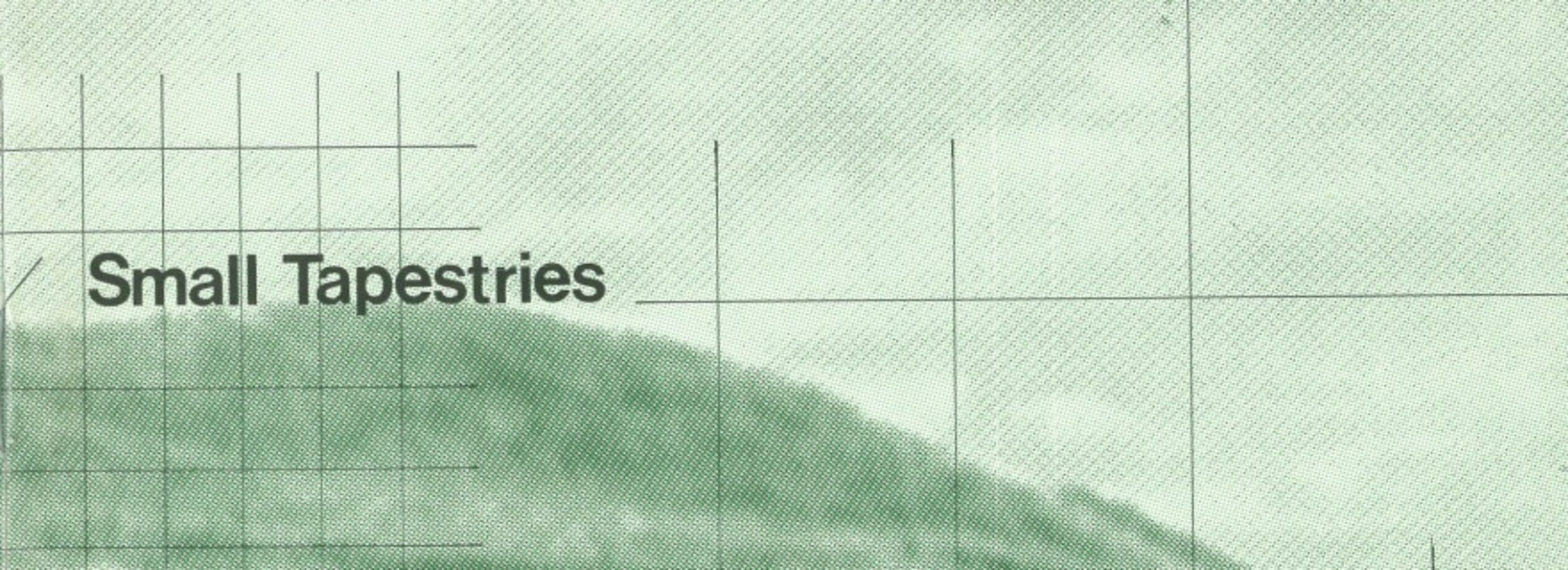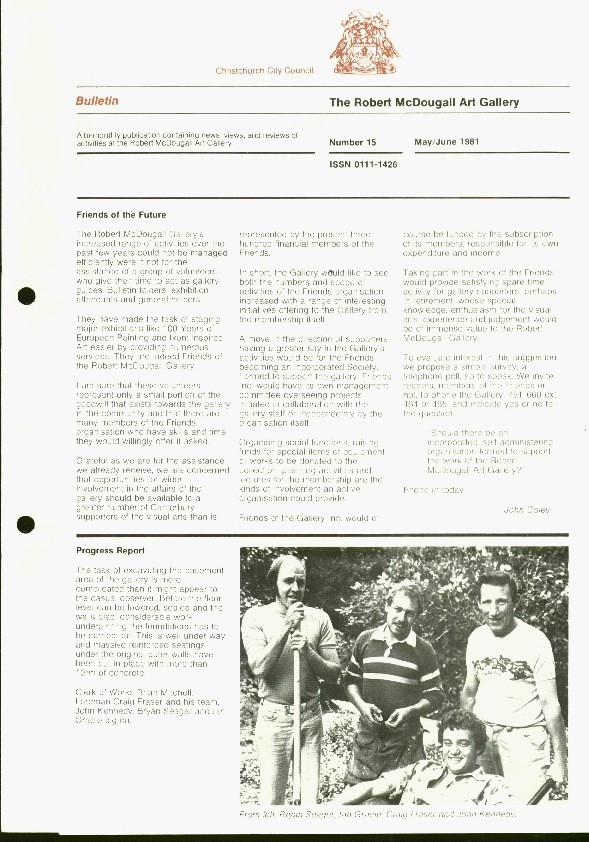This exhibition is now closed
Small Tapestries
8 May –
21 June 1981

Front cover of the exhibition catalogue (detail) Small Tapestries held at the Robert McDougall Art Gallery, 8 May - 21 June 1981.
A Scottish Arts Council Exhibition 1980 New Zealand Tour of 60 small tapestries by leading Scottish tapestry artists. Each weaver has developed his or her own style within the medium, seeking, questioning and arriving at some perhaps unexpected but stimulating conclusions.
Tapestry weaving is almost as ancient as weaving itself. The most universal of all weaving techniques, it has been found in Persia, Mesopotamia and Syria. The history of this particular technique within western civilisation can be traced back 3,300 years to Egypt, to the fragmentary pieces from the tomb of Thutmosis IV, dating from 1420-141 1 BC.
Although the tapestry technique was (and still is) a universal technique, it reached its most refined and sophisticated expression in Europe in the Middle Ages through the eighteenth century. It is therefore of no surprise the technique became synonymous with the large, colourful hangings it produced. The style and choice of subject for these tapestries related very much to those used in paintings - indeed paintings were often copied and major painters of the period were commissioned to design tapestries. Throughout they were dominated by human figures, religion, mythology, allegory, history and romance, as well as aspects of daily life.
The purpose served by tapestries has always been that of covering walls, especially those of cold and damp European churches, castles and palaces and were also used to line the streets on great occasions.
Tapestry weaving differs from other weaving techniques in that it carries its coloured wefts in each case wound around a bobbin, only as far as they are required by a given pattern. The wefts never run the full width of the piece but rather the extent of the colour area. In addition to this tapestry weaving covers its warp threads completely.
While tapestry manufacture flourished in Europe, where entire communities were devoted to their creation, the names of their towns often becoming synonymous with a special technique the English chose to import their tapestries from Flanders. It was not until the end of the nineteenth century when William Morris founded a factory at Merton Abbey in Surrey, could the English contribution to the tradition of tapestry manufacture be considered.
As a direct result of this important workshop the fourth Marquis of Bute established the Dovecot Studios in Edinburgh in 1912 – now known as the Edinburgh Tapestry Company – which is seen as being the beginning of tapestry manufacture in Scotland.
The first tapestries destined for Bute ancestorial homes were large traditional historical scenes, but after the Second World War work on these large panels stopped and a number of designs were obtained from leading contemporary artists such as Henry Moore, Graham Sutherland and Stanley Spencer This tradition continues today with many leading British and American artists translating their paintings onto the tapestry medium.
At Dovecot, small tapestries were woven by student weavers before a tapestry was begun, so the client could gain an idea of the colour and texture as well as allowing the studio to solve aesthetic and technical problems. In time the small tapestries developed technically, first as scaled-down works in their own right. A conscious effort was made by students to produce maquettes in tapestry to develop their ideas and designs and see them worked through.
The staff of Dovecot encouraged the students in their new endeavour, exhibitions were organised and now small tapestries are woven by practically all Scottish tapestry artists. Their works are considered individual statements, complete as they stand and woven at the size required by the design.
This exhibition of small tapestries which was organised by the Scottish Arts Council and is touring New Zealand with the assistance of the Queen Elizabeth II Arts Council and the New Zealand Art Gallery Directors' Council, consists of 60 works by leading Scottish tapestry artists and range from the purely pictorial, decorative, textured or three dimensional to any combination of these elements, still all made with the tapestry tradition.
('Small Tapestries', Bulletin, No.15, May/June 1981, p.3)
Exhibition number 262
Location:
Robert McDougall Art Gallery - main gallery
Exhibition number: 262
